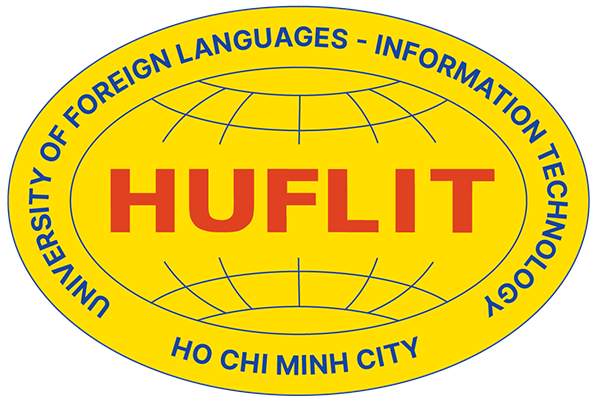-
HUFLIT tổ chức chuyên đề chăm sóc sức khoẻ tinh thần cho người lao động lần thứ haiVừa qua, HUFLIT đã tổ chức chuyên đề Chăm sóc sức khỏe tinh thần người lao động lần thứ hai. Chuyên đề nhận được sự tích cực tham gia của đội ngũ giảng viên, cán bộ và nhân viên HUFLIT.
-
HUFLIT accompanies Teikyo University students on a journey of cultural and academic exchangeBảy sinh viên đến từ Đại học Teikyo (Nhật Bản) đã có chuyến trao đổi học tập kéo dài bốn tháng tại Khoa Ngoại ngữ HUFLIT. Hoạt động không chỉ giúp các bạn nâng cao trình độ tiếng Anh, mà còn mang lại nhiều trải nghiệm sâu sắc về văn hóa và đời sống Việt Nam.
The complete flow of the Áo dài’s history showcased through the program “Dáng xưa Hồn Việt”
The Áo Dài is not merely a garment but also a cultural symbol closely associated with the soul and identity of Vietnam. Under the theme “Dáng xưa Hồn Việt,” the Student Union – Faculty of Tourism and Hospitality at HUFLIT organized a hands-on experiential activity to honor the traditional value of the Áo Dài, while helping students gain a deeper understanding of the historical and cultural journey of Vietnam’s national costume.
The program offered a multi-sensory experience and valuable insights into the Áo Dài’s significance, connecting the past with the present through its imagery – a symbol of both gentleness and pride for the Vietnamese people across different eras.
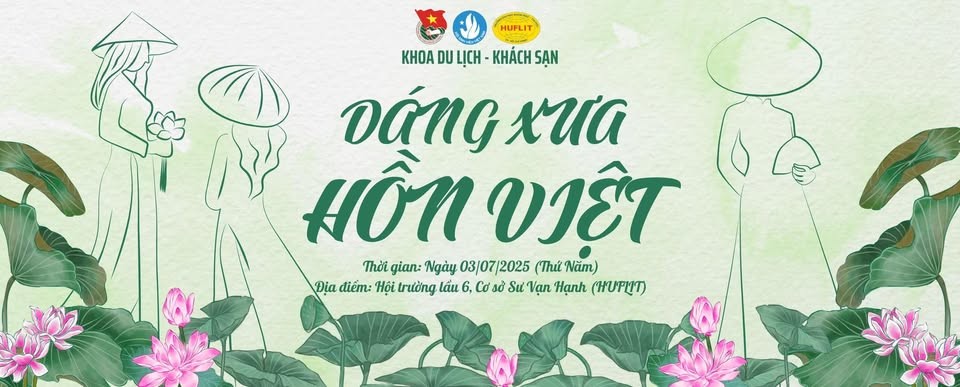
The journey of preserving and spreading the value of Vietnamese cultural heritage
At the program, speaker Huỳnh Ngọc Vân – Director of the Ho Chi Minh City Áo Dài Museum, Member of the Executive Committee of the Vietnam Cultural Heritage Association, and Standing Member of the Ho Chi Minh City Cultural Heritage Association – shared passionately about the áo dài, a symbol deeply connected to the nation’s history and identity.
She affirmed: “The áo dài is not merely a garment but a cultural symbol, reflecting the national identity and traditions of the Vietnamese people. Worn by men, the áo dài conveys strength, elegance, and freedom; when worn by women, it expresses delicacy, grace, and gentleness”.
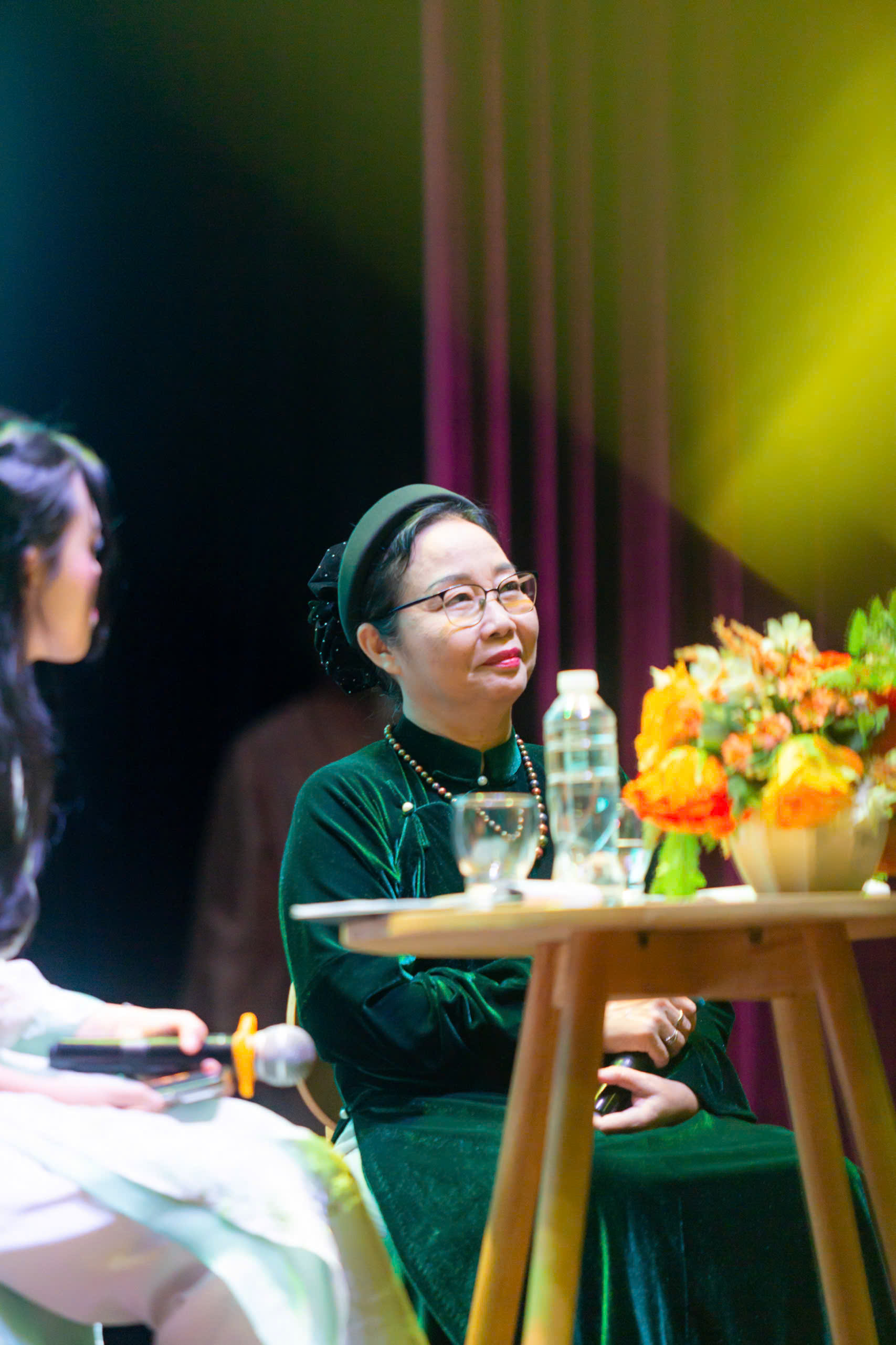
Trong phần chia sẻ đầy cảm xúc, bà Huỳnh Ngọc Vân cũng trải lòng về hành trình xây dựng Bảo tàng Áo dài – một công trình tâm huyết xuất phát từ tình yêu sâu sắc với văn hóa dân tộc. Đằng sau mỗi hiện vật được trưng bày là cả quá trình sưu tầm gian nan, đòi hỏi sự kiên nhẫn và thuyết phục trong nhiều năm bởi nguồn hiện vật quý ngày càng hiếm và khó tiếp cận.
Không chỉ là không gian trưng bày, Bảo tàng Áo dài còn là nơi kể chuyện, nơi mỗi tà áo chứa đựng một hành trình, một ký ức, một lát cắt văn hóa của đất nước qua từng giai đoạn lịch sử. Bà Huỳnh Ngọc Vân kỳ vọng, thông qua việc tạo nên những kết nối cảm xúc chân thật từ hiện vật, thế hệ trẻ sẽ thấu hiểu giá trị văn hóa ẩn sau từng nếp áo, từ đó hình thành niềm tự hào và ý thức gìn giữ bản sắc dân tộc trong dòng chảy hội nhập.
Ngoài ra, diễn giả còn điểm qua về sự khác biệt giữa Áo dài Việt Nam và trang phục truyền thống Trung Quốc như sườn xám (qipao). “Dù có một số yếu tố ảnh hưởng trong quá trình giao thoa văn hóa, áo dài là kết tinh của bản sắc dân tộc Việt với phom dáng, đường nét, chất liệu và tinh thần rất riêng” – Diễn giả chia sẻ.
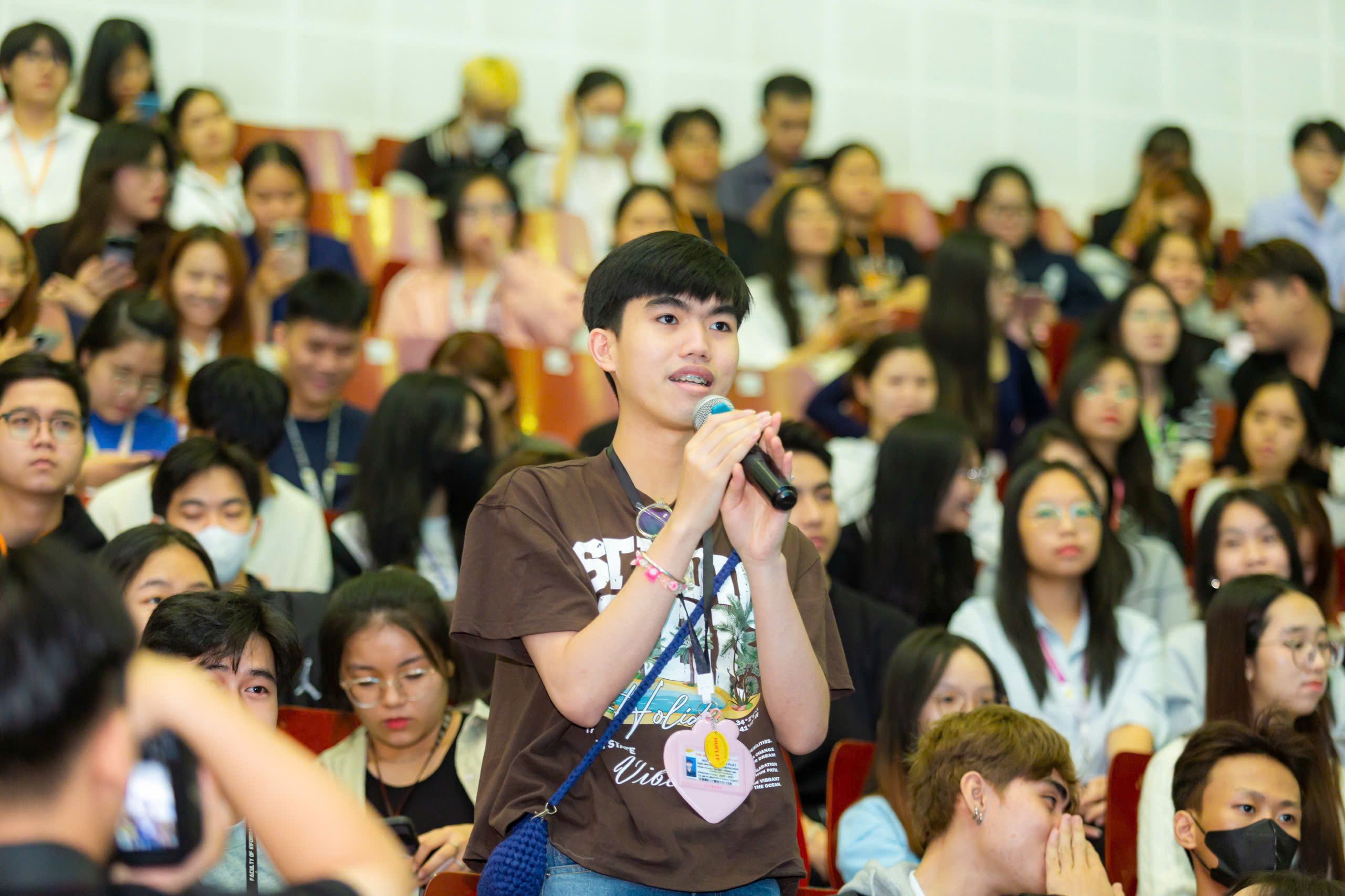
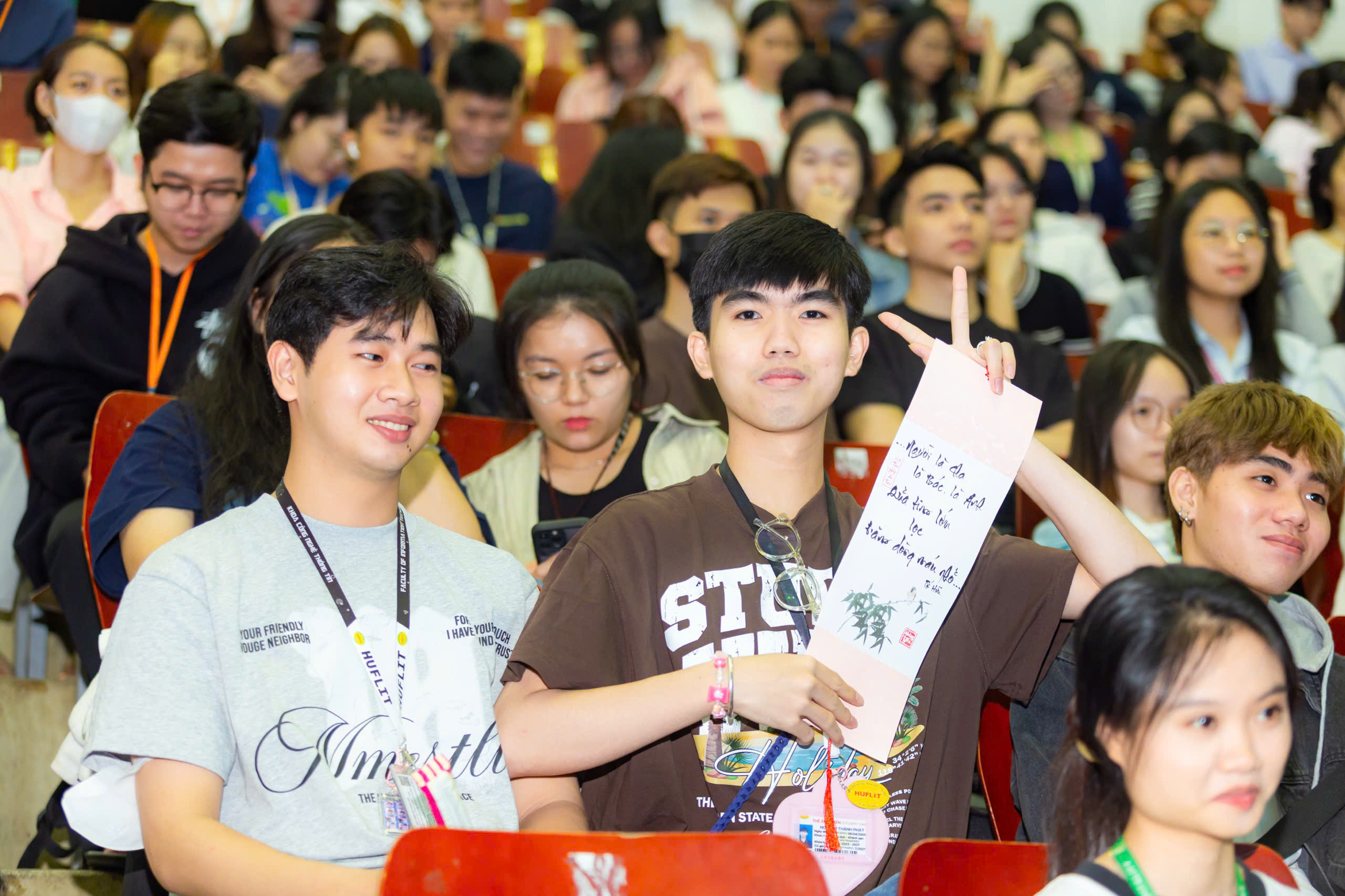
HUFLIT students celebrate the beauty of the Áo Dài through music and performance
In addition to the insightful sharing from the speaker, the program was marked by a series of special artistic performances staged and performed by students from the Faculty of Tourism – Hospitality. The opening performance, “Kẽo cà kẽo kẹt,” combined dance and music, highlighting traditional elements through the presentation by student Thanh Huyền and the dance group. Following that, the song “Một vòng Việt Nam,” performed by students Khánh Ly and Minh Tú, continued to evoke emotions with their clear vocals and graceful Vietnamese costumes, creating an art space rich in cultural essence.

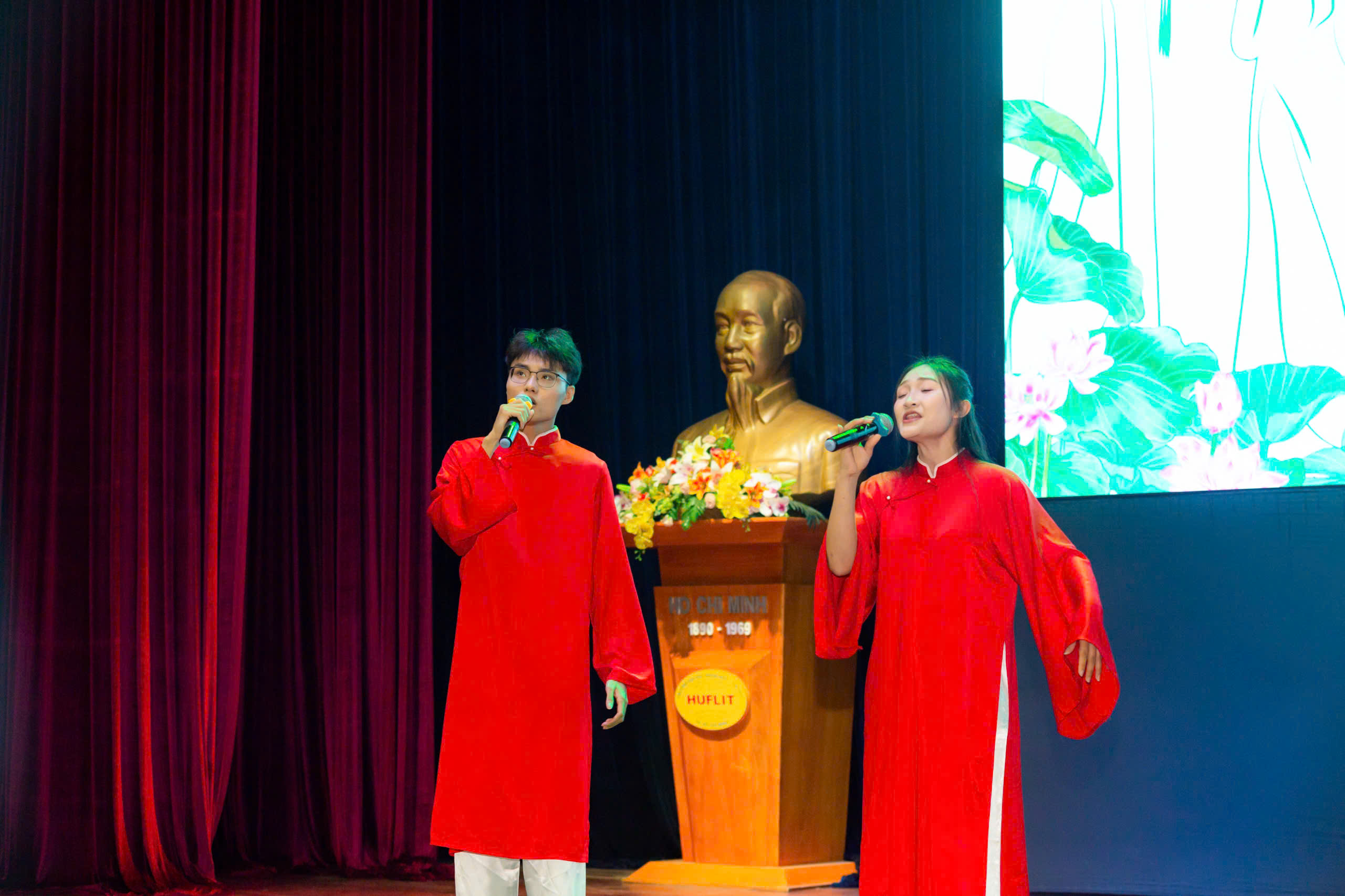
The audience had the opportunity to travel back in time and explore the development journey of the Vietnamese áo dài through the impressive performance “History of the Áo Dài,” set to the music of “Việt Nam Tôi.” From the simple images of the 17th-century “Áo dài tứ thân nữ” and “Áo dài the nam” to the solemn elegance of the “Áo dài ngũ thân tay chẽn nữ” and “Áo dài ngũ thân tay thụng” (formal ceremonial attire), each design reflects a memorable cultural period, honoring the traditional beauty and moral values of the Vietnamese people.
The audience also admired the majestic “Áo Dài of the Nguyễn Dynasty” from the 19th century, the bold innovation of the “Áo dài Tân thời” (Áo dài Lemur) in 1943, and the flattering silhouette of the “High-Collar Áo Dài” from the 1950s – 1960s. This was followed by the liberating style of the “Open-Collar Áo Dài” (boat neck) and the free-spirited “HIPPY Áo Dài” of the 1960s. Finally, the performance concluded with a creative fusion of art and traditional costume through the “Painted Áo Dài” by artist and designer Lê Sĩ Hoàng.
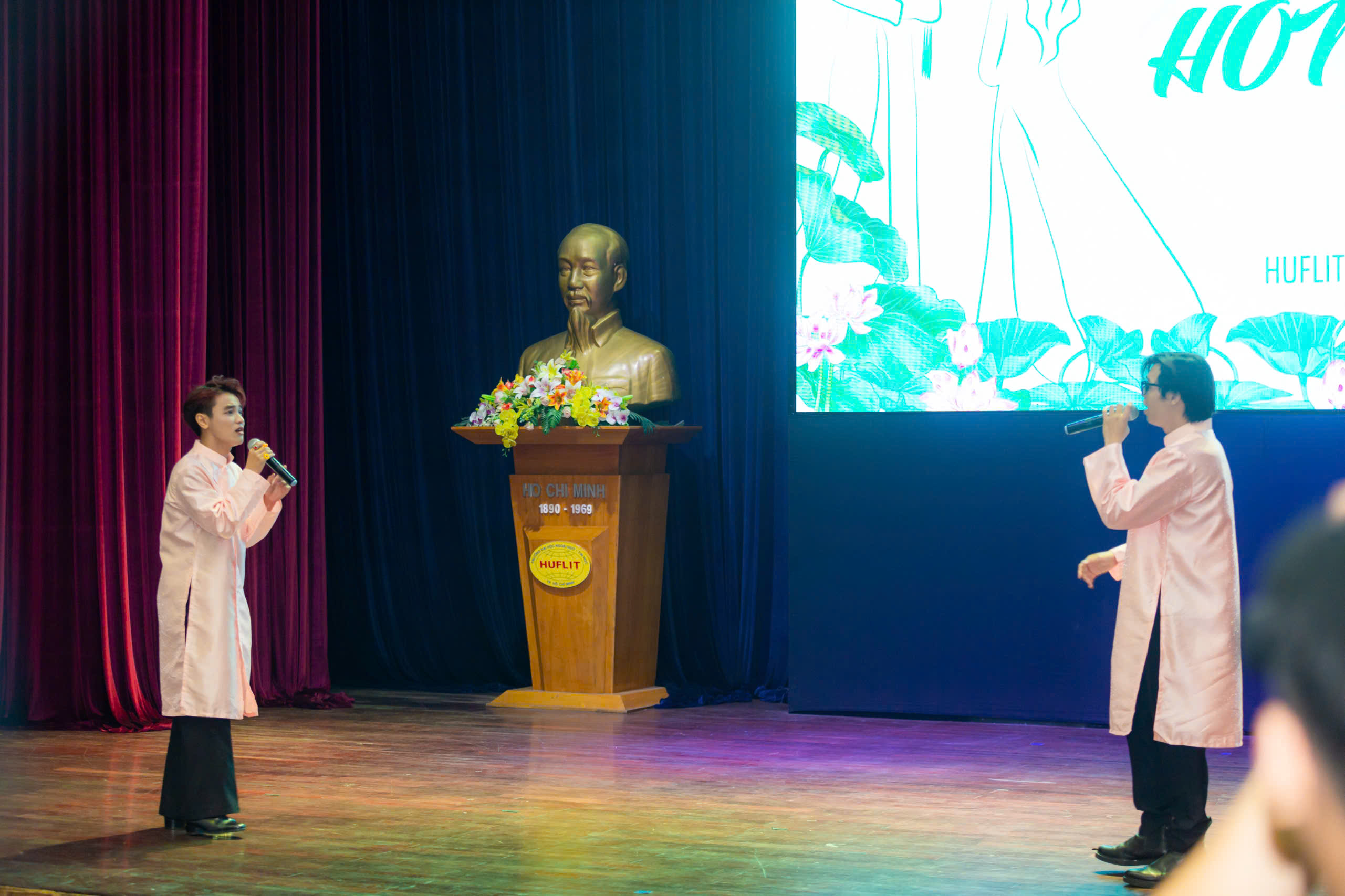
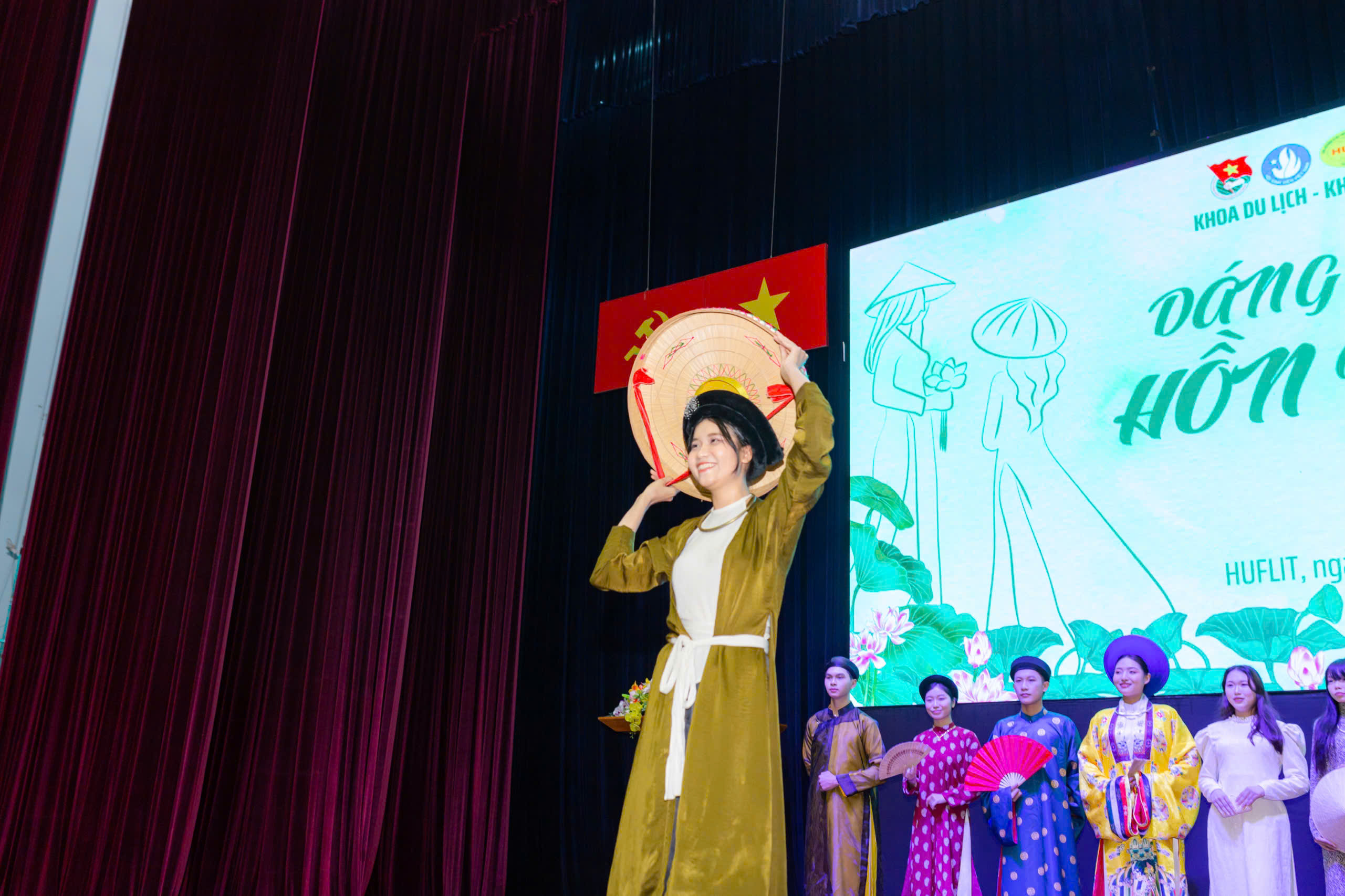
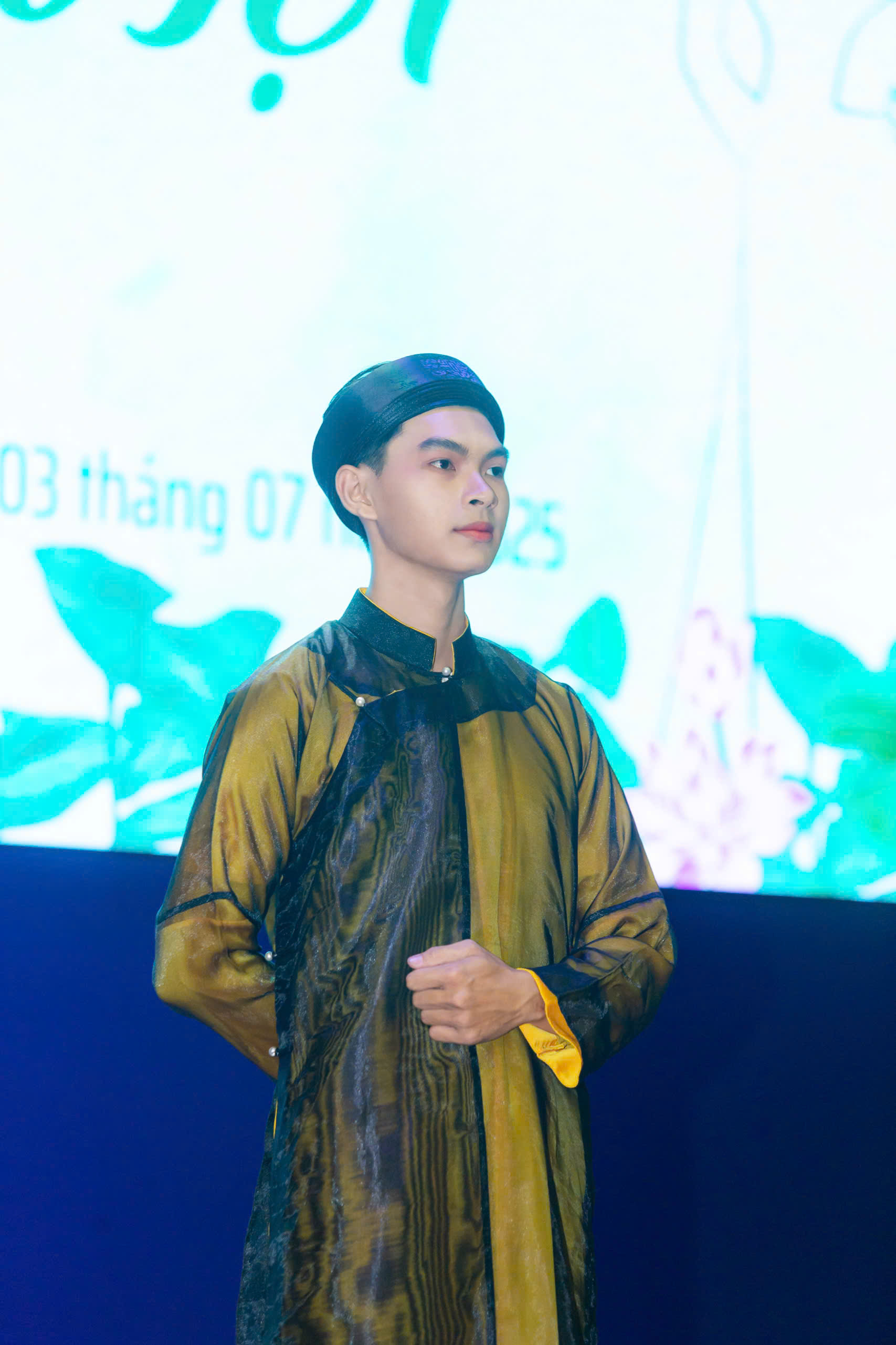
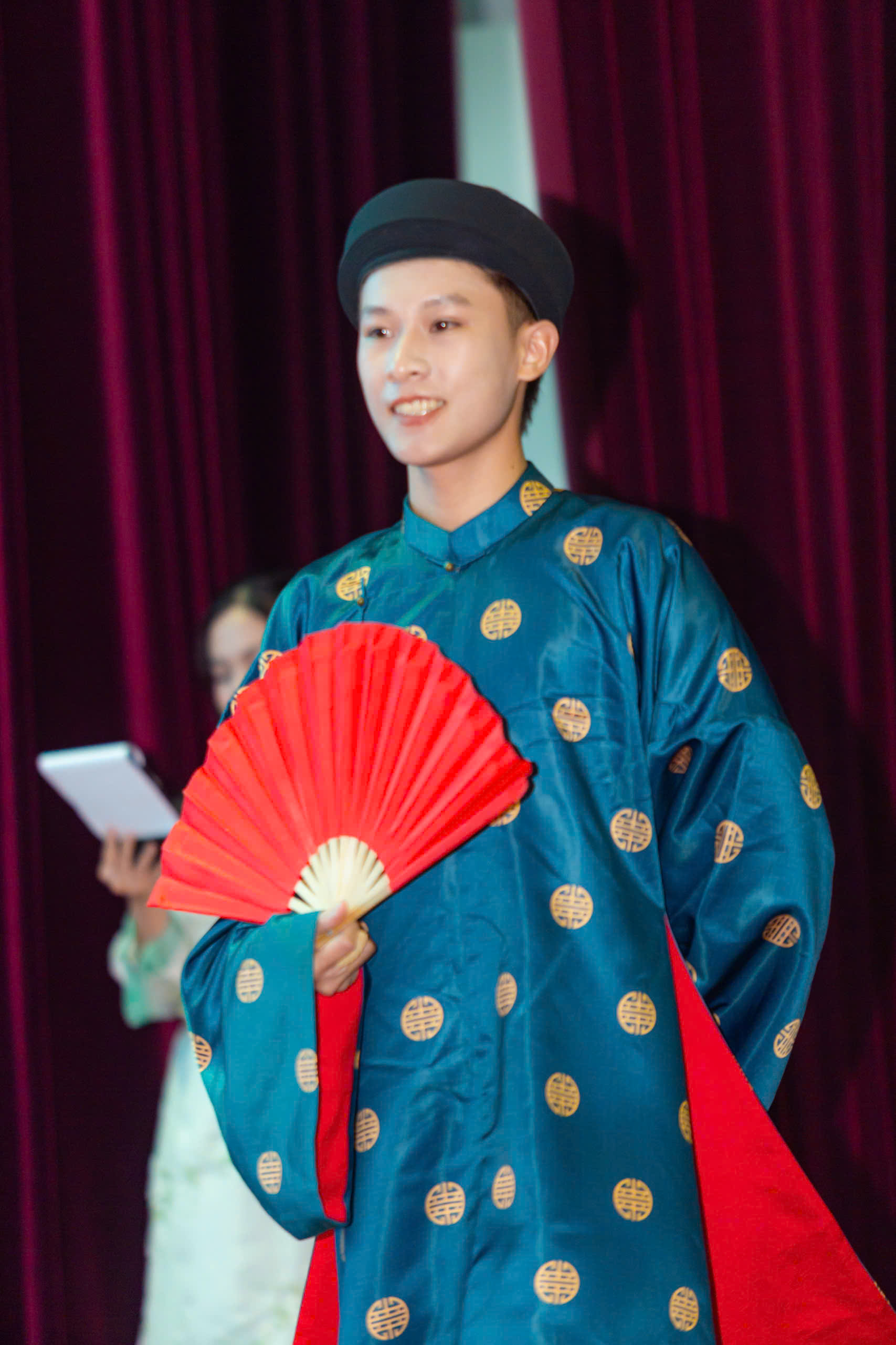
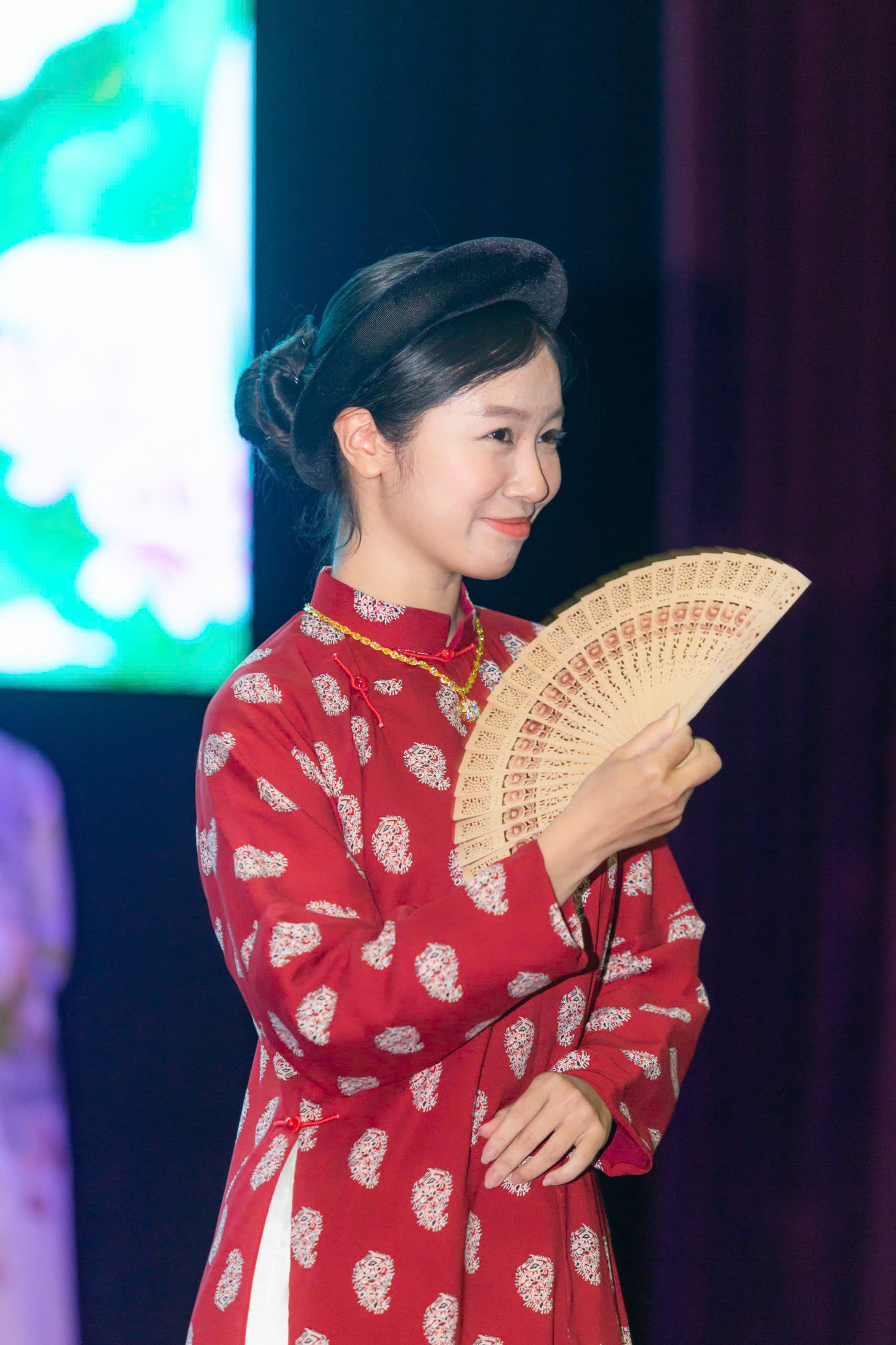
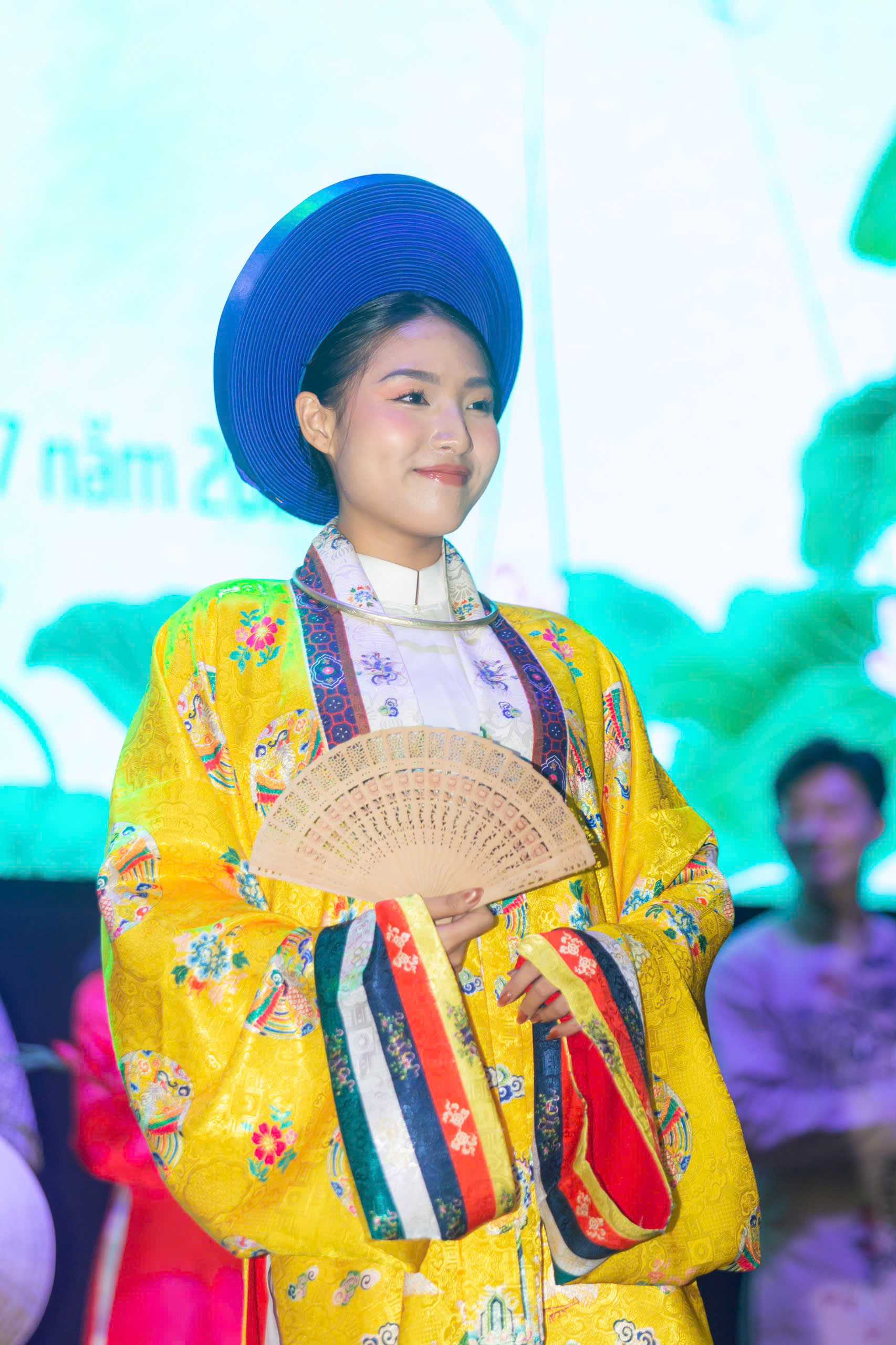
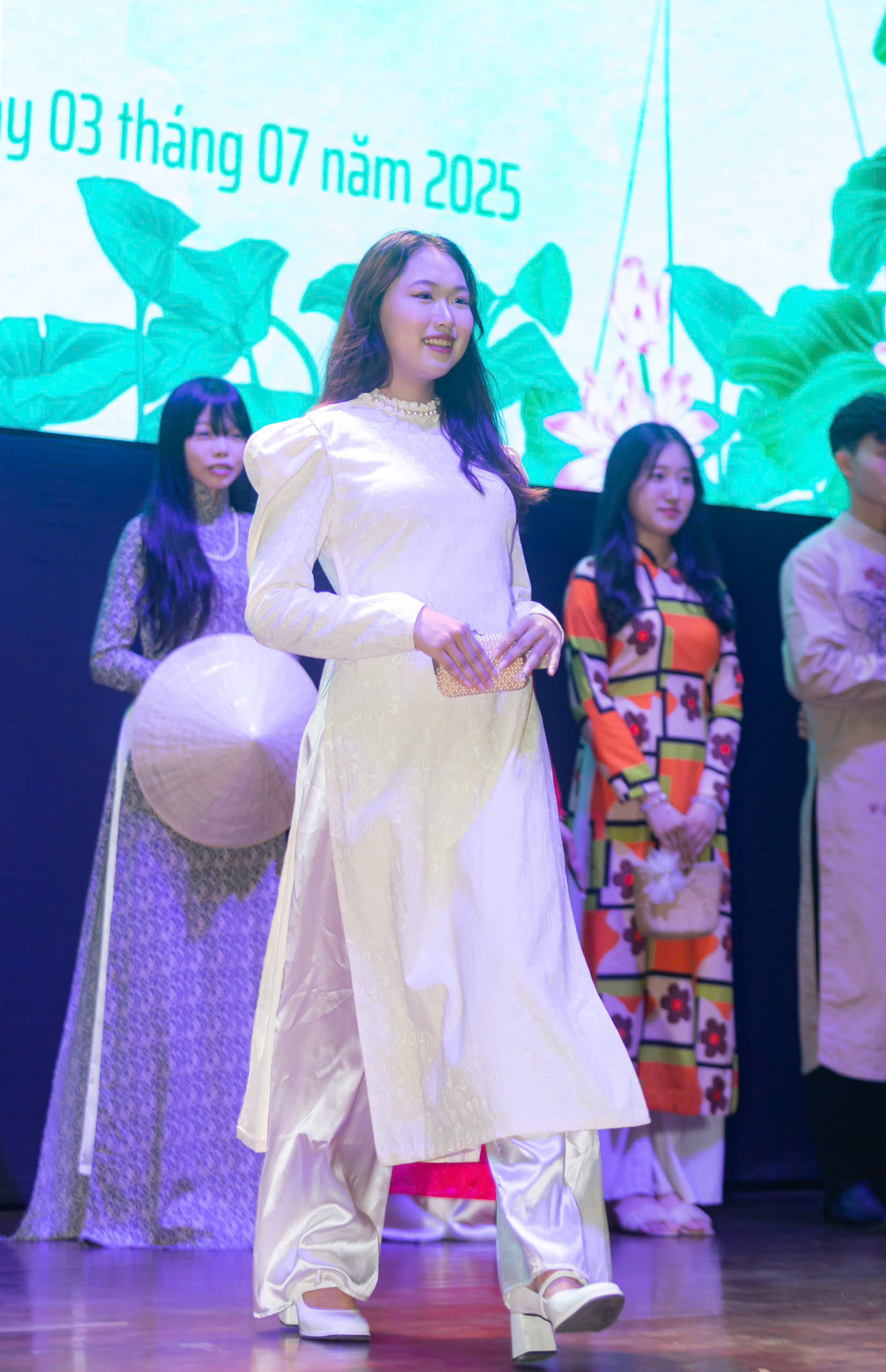
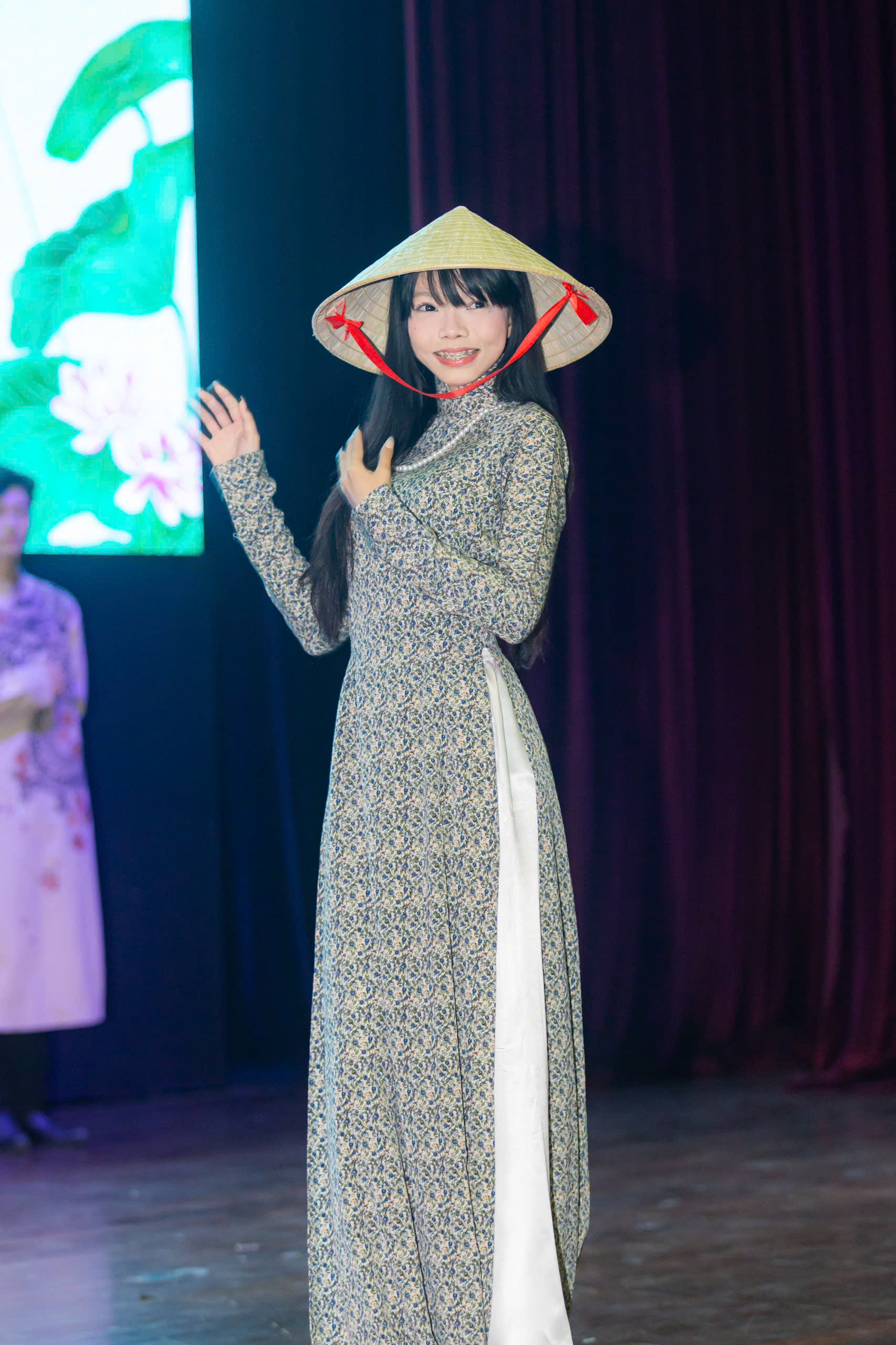


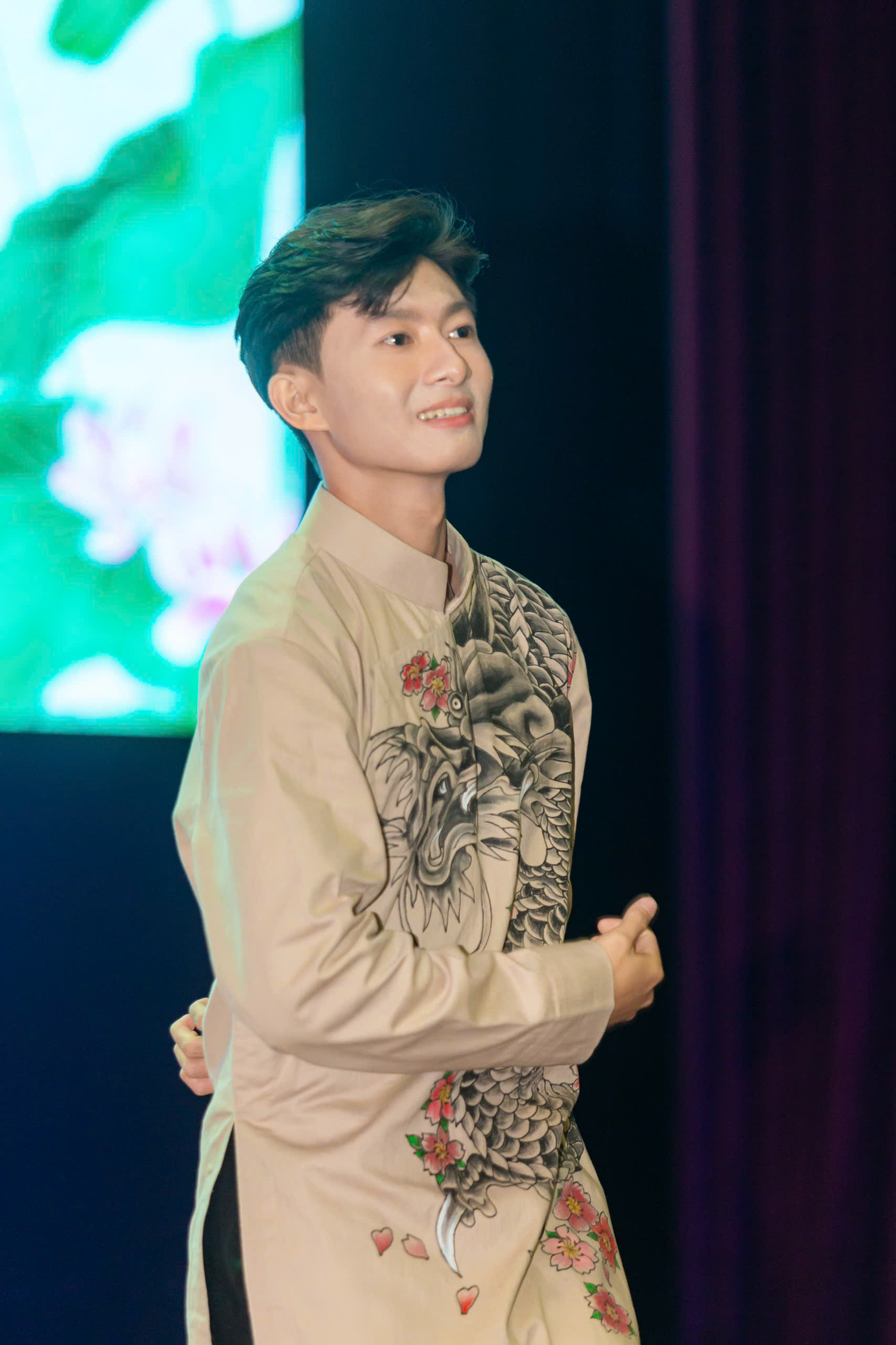
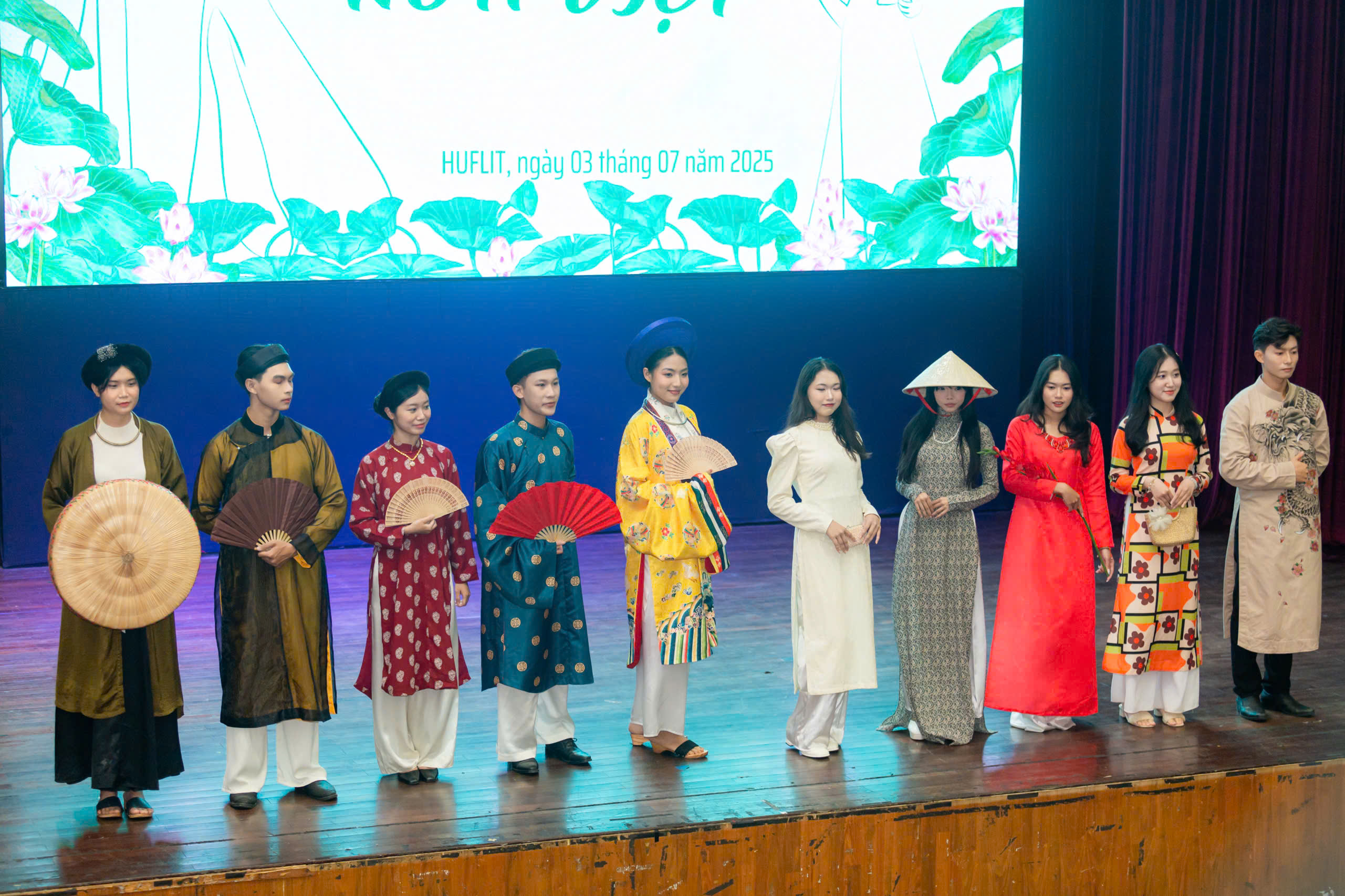
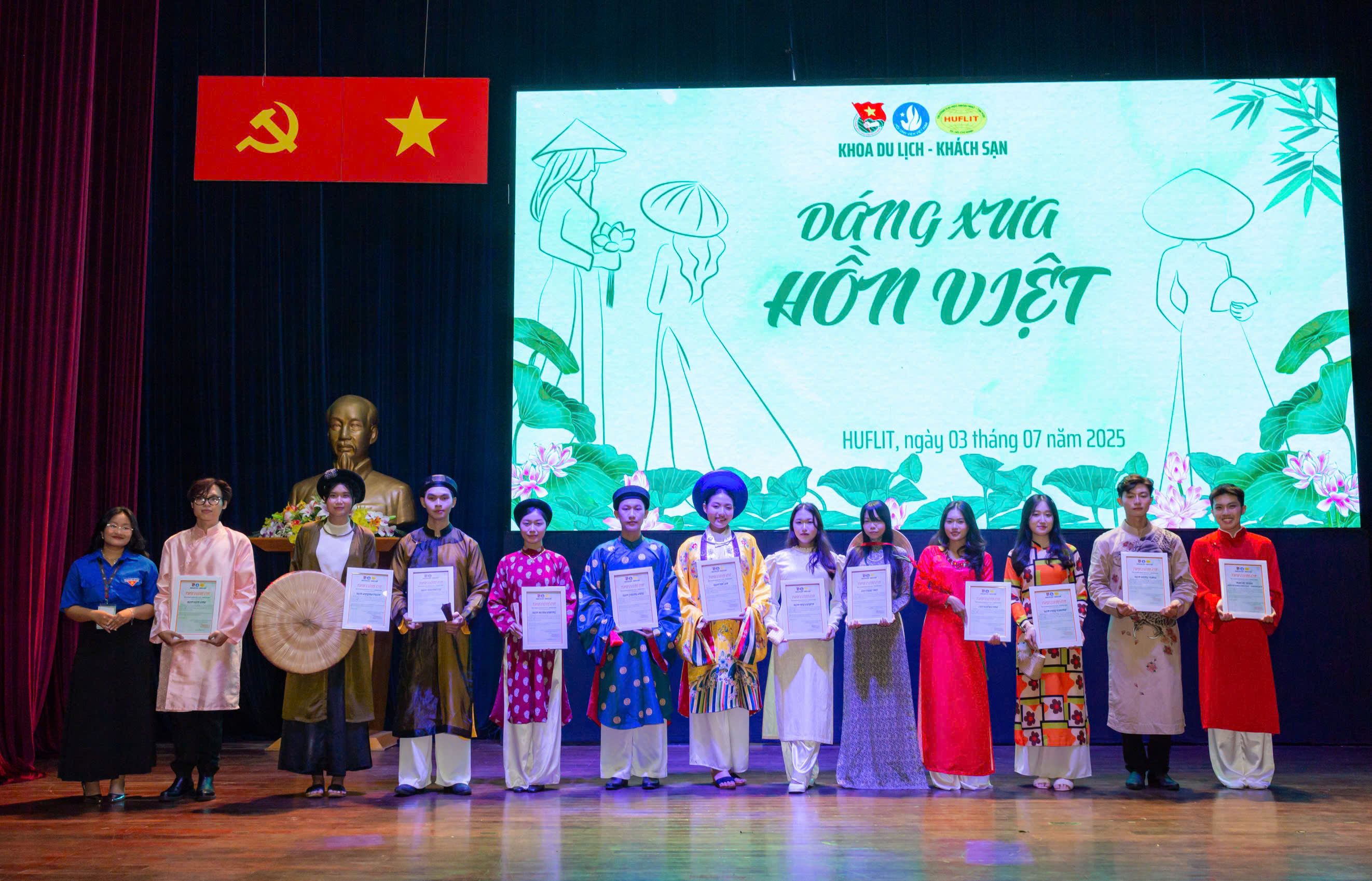
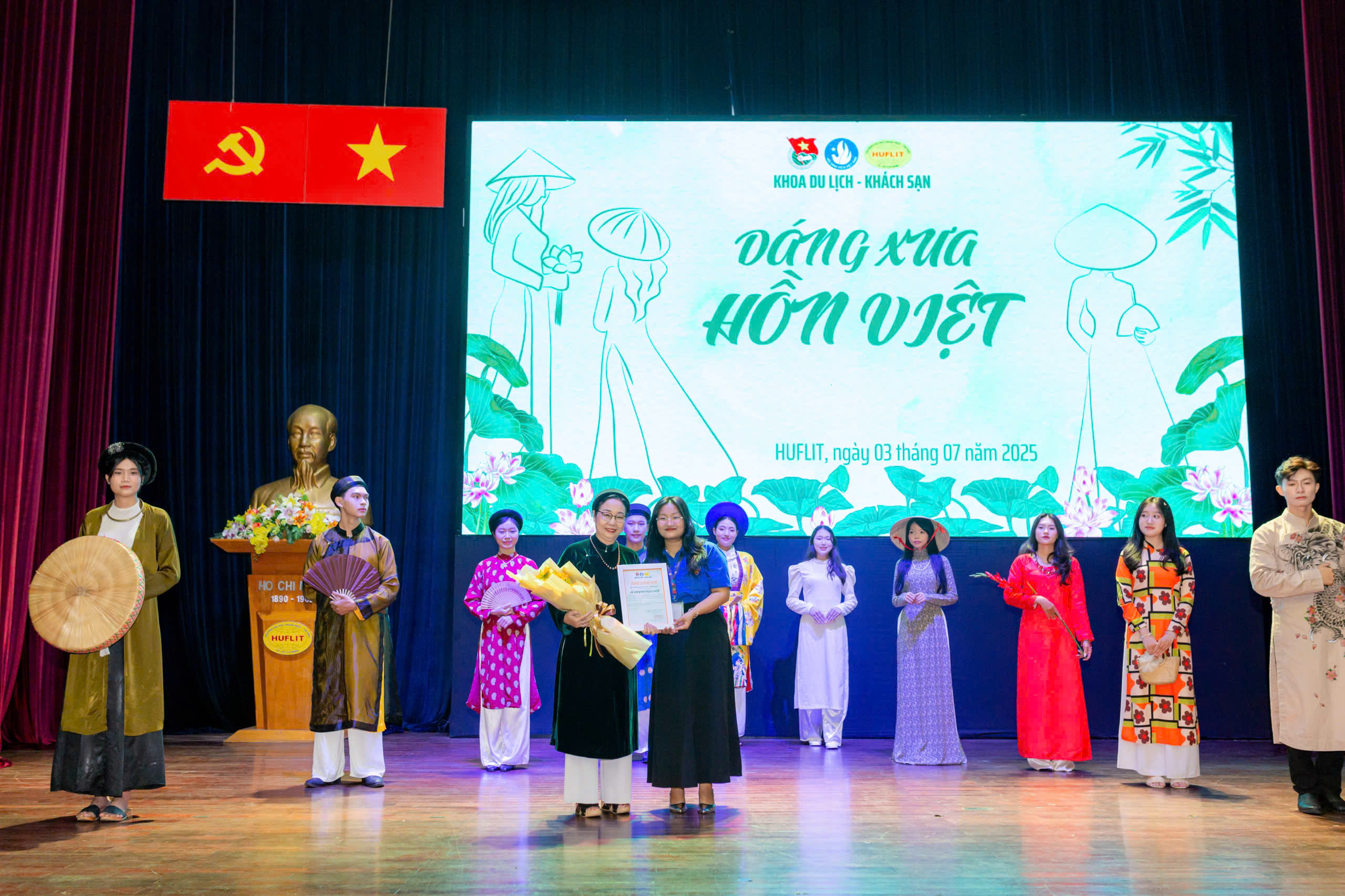
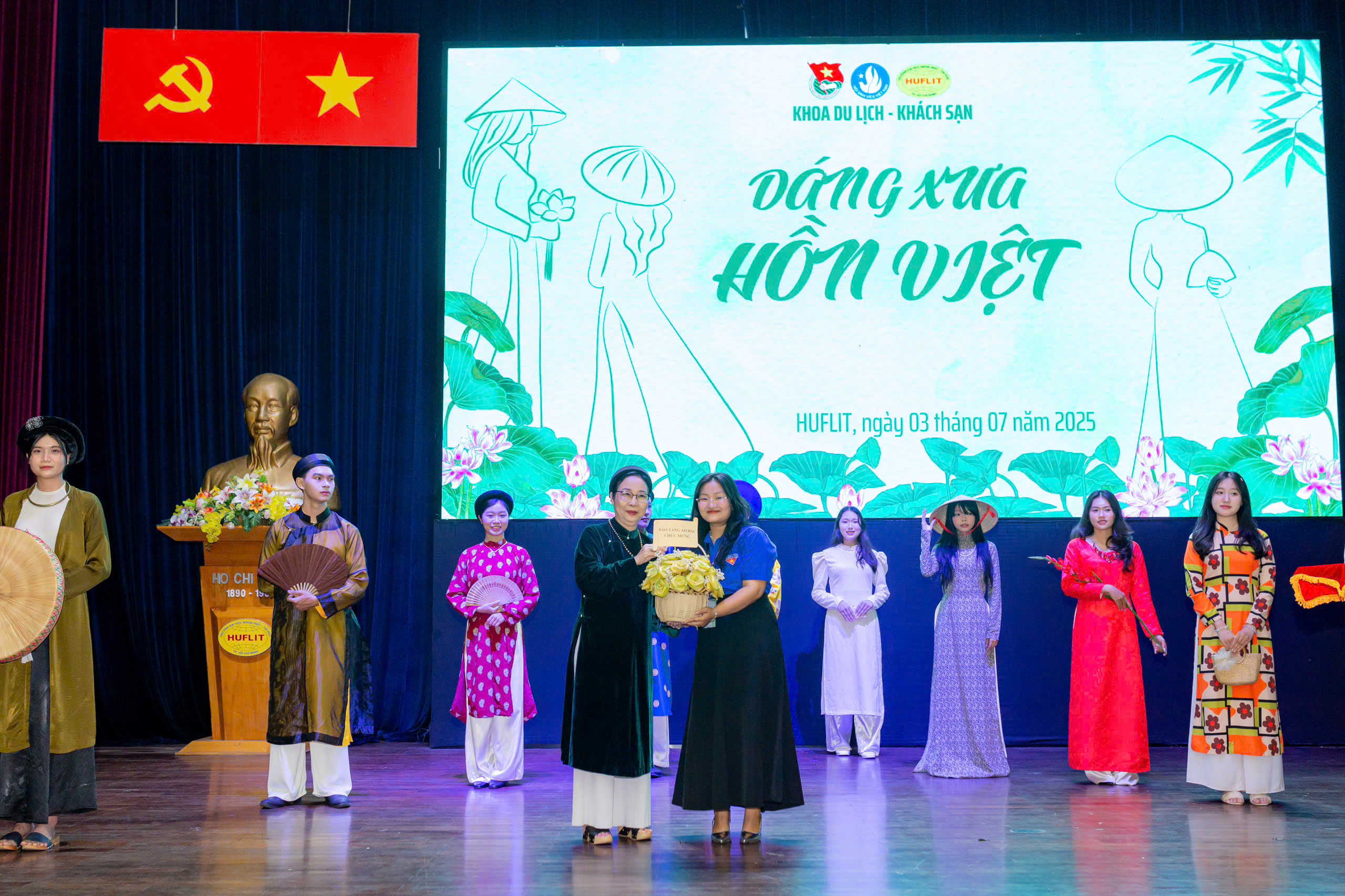
Not only providing knowledge about tourism culture, the experiential activity “Dáng xưa Hồn Việt” also offers students the opportunity to learn through engaging, lively, and inspiring formats. It serves as a bridge that helps the younger generation appreciate and take pride in the values of national culture. In the coming time, the Faculty of Tourism and Hospitality’s Youth Union will continue to promote the spirit of “learning while playing” by implementing more diverse experiential activities, helping students to “understand correctly – remember longer – apply effectively”.
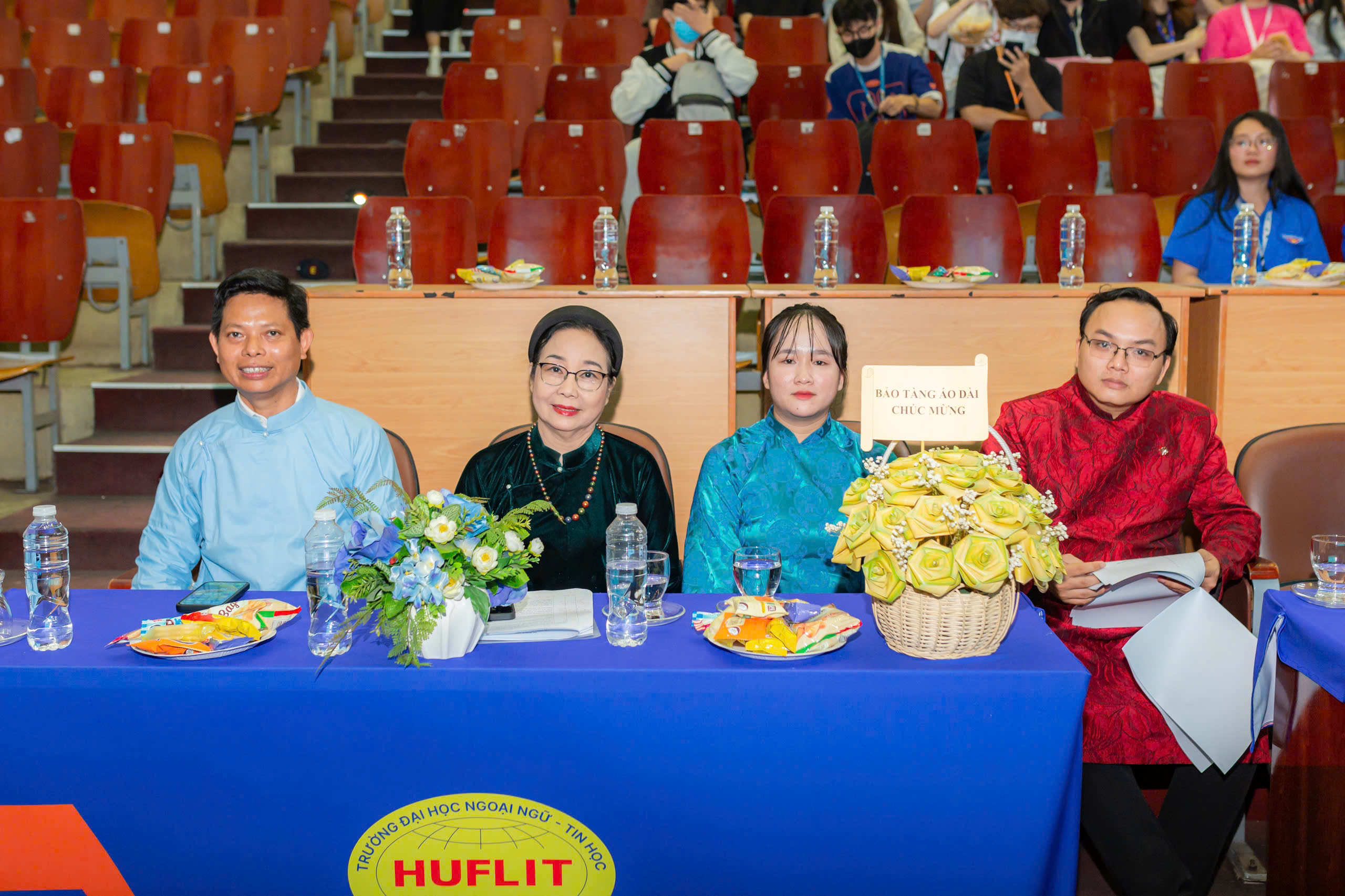
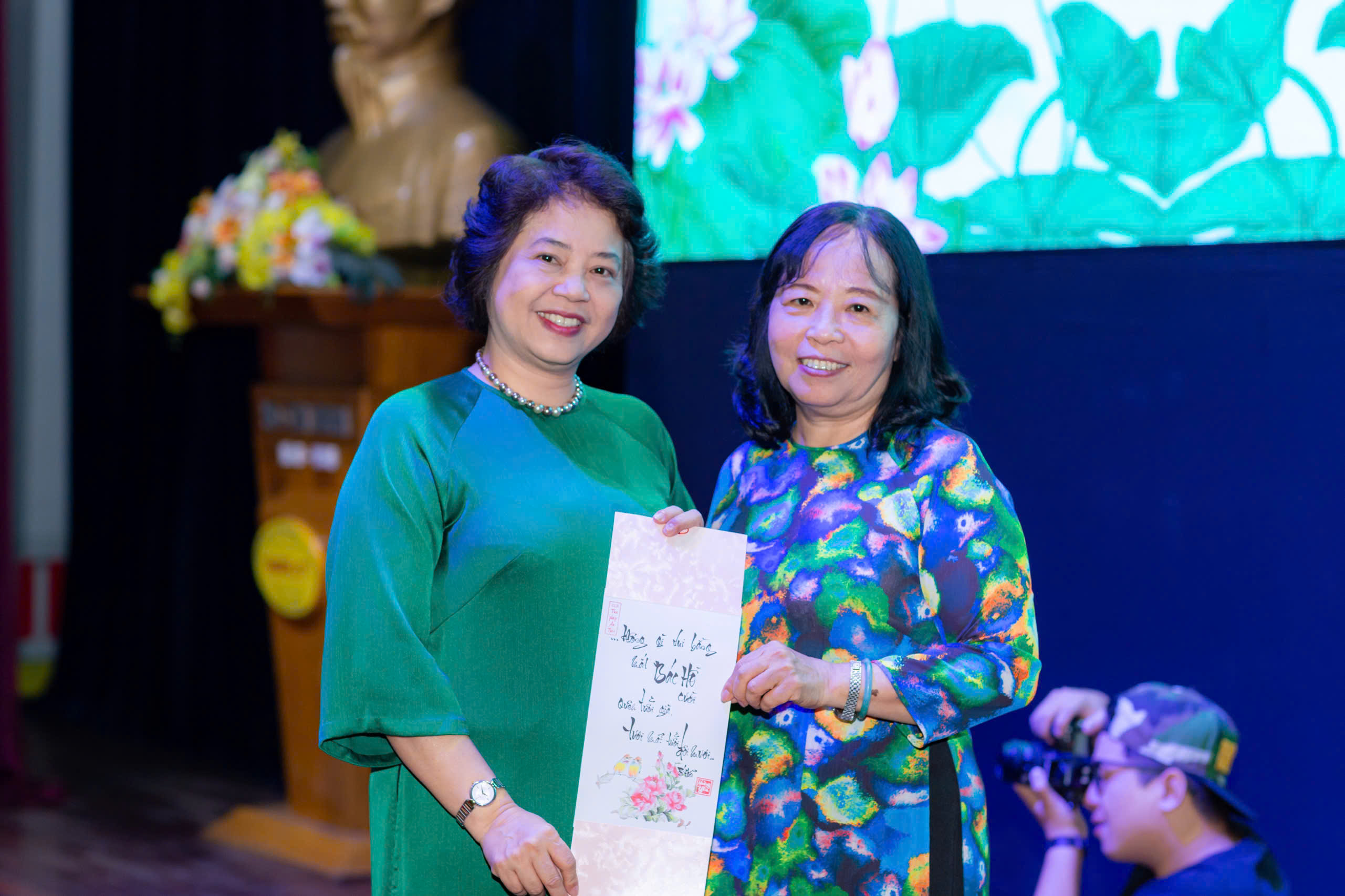
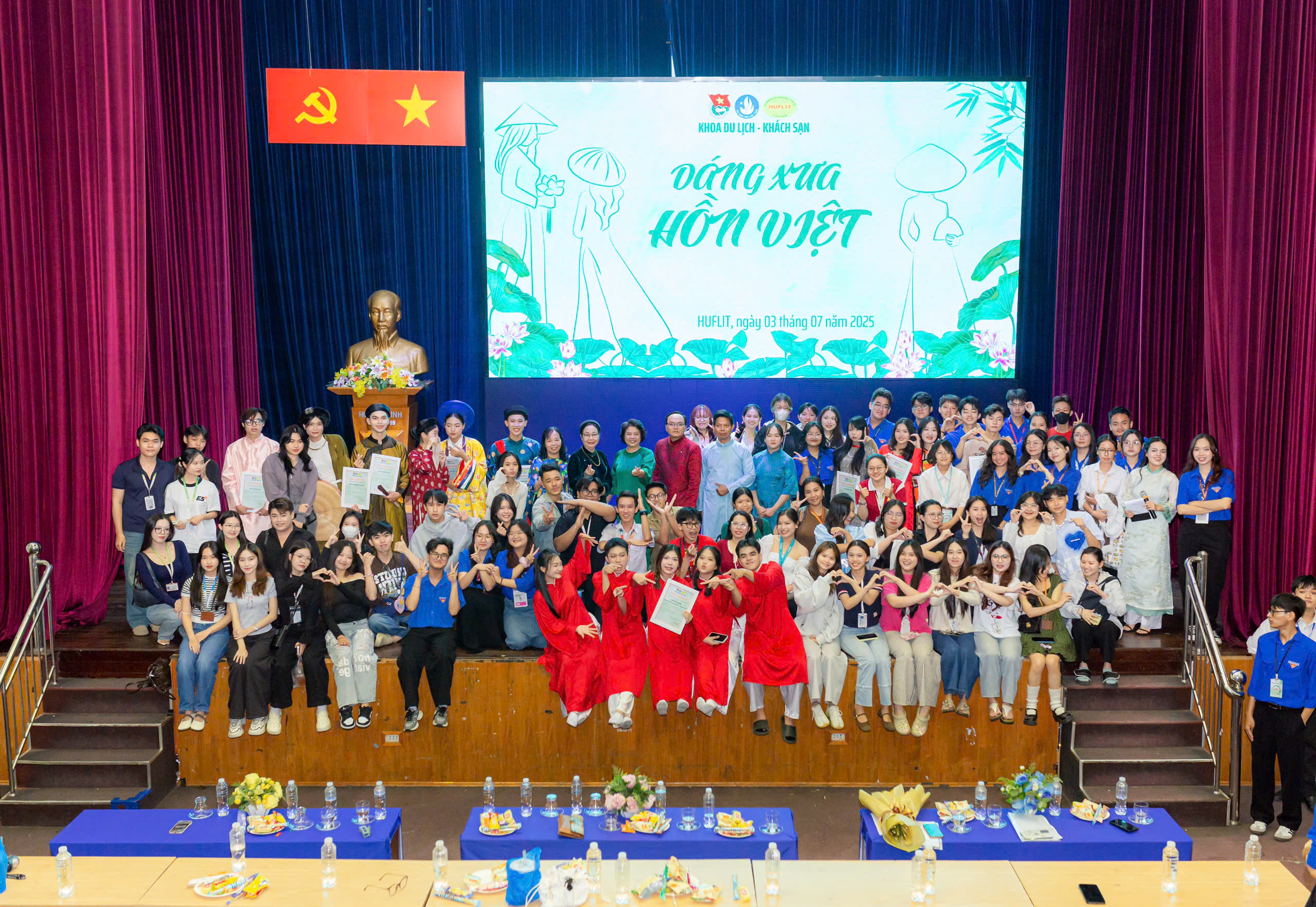
CONTACT INFO
Advising education enrollment

